Milestones
Story of the Early Days of SECOM begins a while before SECOM's establishment of July 1962. In this section the history of SECOM is looked back to show how foundations of the company were built in the early days.
- 1962
− 1980 - 1981
− 1988 - 1989
− 2016 - 2017 −
From SECOM's founding through creation of
“The Safe Community Industry.”
SECOM introduced security services to Japan.
Originally known as Nihon Keibi Hosho Co., Ltd. - Japan's first security company -SECOM was inspired by a mutual friend of co-founders Makoto Iida and Juichi Toda, who had noted the prevalence of security firms while traveling in Europe. Seizing the opportunity to introduce a completely new industry to Japan, the duo established the company on July 7, 1962, opening an office in Shiba-koen, Tokyo.
Mr. Iida's first sales efforts were occasionally successful but limited, even when calling on prospects in person. Because the two founders were resolute in their decision not to rely on acquaintances for generating business and to require clients to sign a prepaid, three-month service contract, it was initially tough to attract many clients.
Over time, however, they slowly managed to establish a customer base. Finally, by securing the contract to provide security for the Olympic Village at the 1964 Tokyo Olympics, the firm began to prosper. Around the same time, realizing that growth would be limited as long as the business model relied exclusively on human resources, the company developed Japan's first on-line security system, SP Alarm, in 1966.
SP Alarm began slowly, but after the system proved key to the arrest of the perpetrator in the notorious Case #108 serial murder shootings in 1969, the firm's rapidly growing patrol business was abolished in favor of SP Alarm. Use of the system grew from the 1970s, due in part to increases in the number of Control Centers and emergency depots as well as development of Computer Security System (CSS).
SECOM also pioneered security systems for financial institutions, which typically require heightened security from the onset, both for bank branches and ATMs.At present, our systems are hosted in a wide variety of facilities, including shops, offices, factories, schools, hospitals and museums.Moreover, ongoing R&D has produced specialized systems for numerous other facilities, such as SECOM 3 (currently AZ-Access), a comprehensive security management system for large facilities.
1962
July 7:Makoto Iida and Juichi Toda cofounded Nihon Keibi Hosho Co., Ltd. (currently SECOM Co., Ltd.) in Shiba-koen, Tokyo, Japan's first commercial security service provider, starting with patrol and static guard service.

1964
October:Provided security at the Yoyogi Olympic Village during the Tokyo Olympics. Business began to expand as the company received widespread recognition and trust as the event's official security provider.
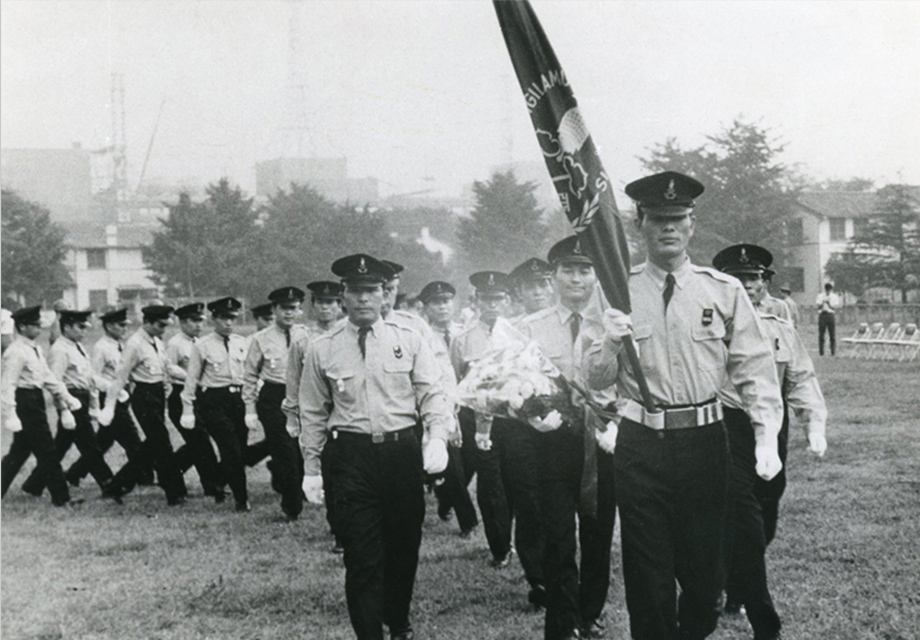
1965
April:“The Guardman,” a drama series inspired by the company, was broadcast on television. It became a massive hit, leading to greater recognition of the company.
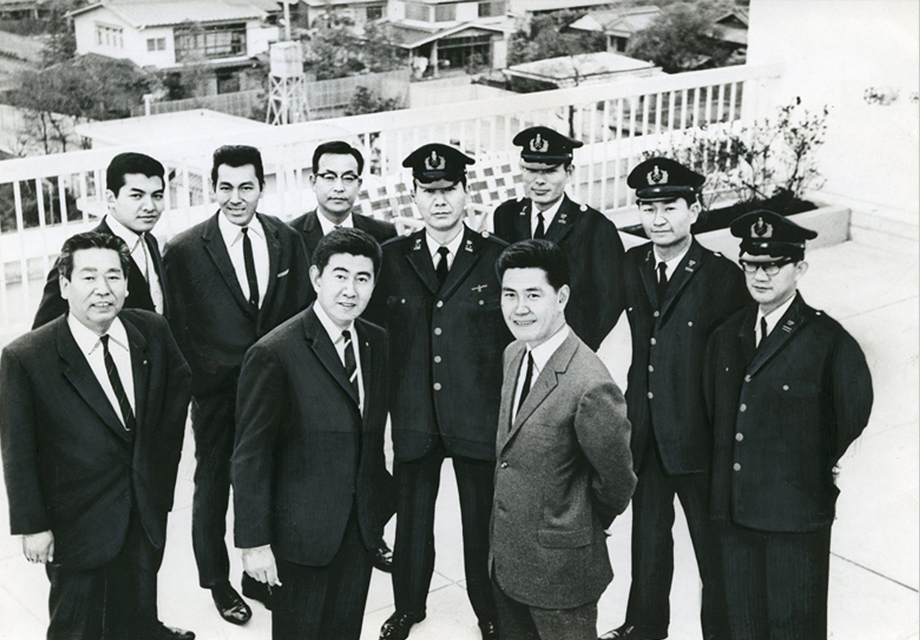
1966
June:Developed Japan's first online security system, SP Alarm. Remotely monitored subscribers' premises 24/7 from SECOM Control Centers and dispatched immediate response from emergency depots as needed.
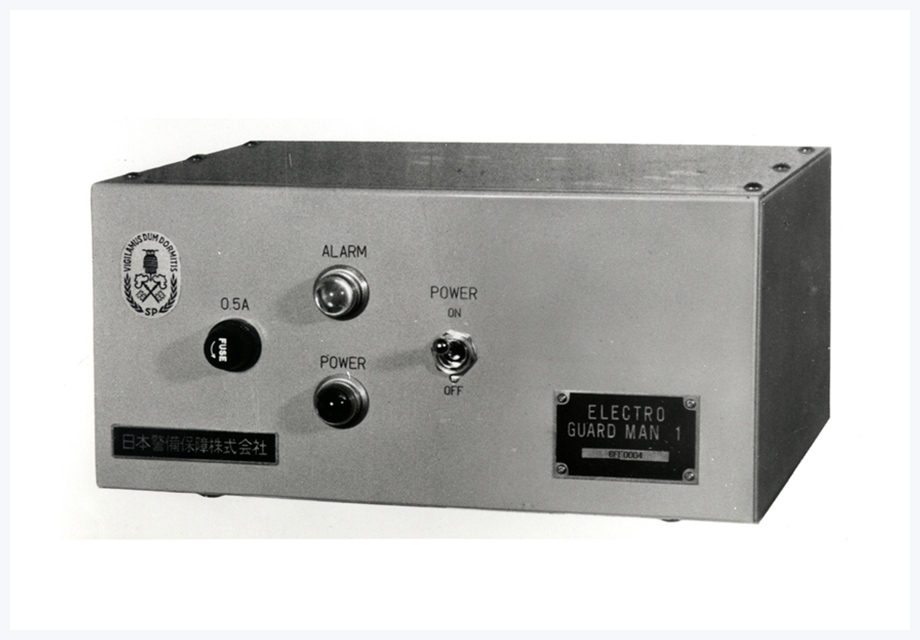

1967
September:Completed development of a unique armored vehicle for transporting cash and launched first armored car services for banks.

October:Joined the International Security Ligue, established in 1934 as the voice of the world's leading security companies.

1969
April:Attracted significant attention when “SP Alarm” contributed to the arrest of the perpetrator in the Case “Serial Killer 108.”

1970
July:Established a full-scale central Control Center in Harumi, Tokyo, as well as 18 new Control Centers across the country, allowing the expansion of “SP Alarm.”
1972
February:Successfully provided security for the Winter Olympics hosted in Sapporo.
1973
February:Established the brand name “SECOM,” an abbreviation of “Security Communication.”
March:Commenced sales of “SECOM 3” (currently AZ-Access), a comprehensive security management system for large facilities.
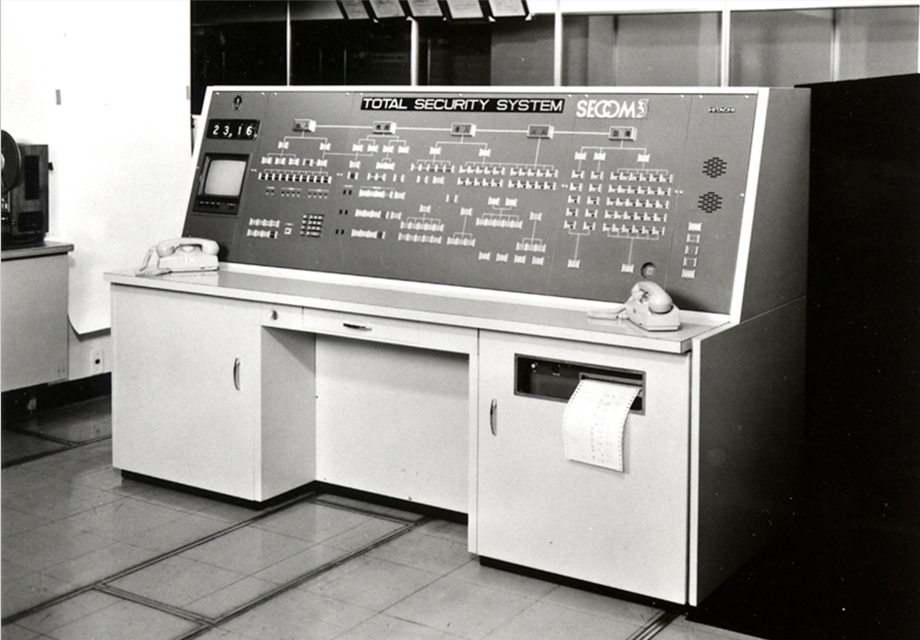
August:Partnered with the Huntington National Bank, known as the most innovative bank in the United States, to provide a security system for an automated banking system.

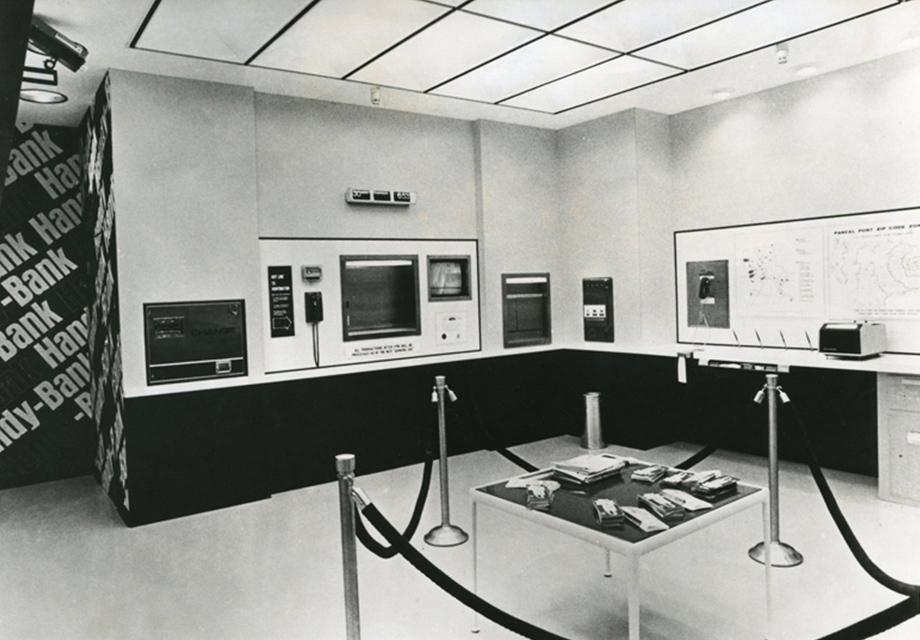
1974
April:Launched CD Security Pack, Japan's first security management system for automated cash dispensers.
June:Was listed on the second section of the Tokyo Stock Exchange.
September:Established the first training facility, SECOM HD Center, in Aobadai, Yokohama.
September:Formed a business alliance with top fire protection services company, Nohmi Bosai Kogyo (currently Nohmi Bosai Ltd.).
1975
March:Commenced operation of the world's first CSS (Computerized Security System) at our control center in Harumi, Tokyo. CSS allowed for monitoring emergencies in real-time, leading to dramatic improvement in safety and increased efficiency.

1977
October:Established Secom Industries Co., Ltd. in Shiroishi, Miyagi Prefecture. Commenced production of own equipment for online security systems.
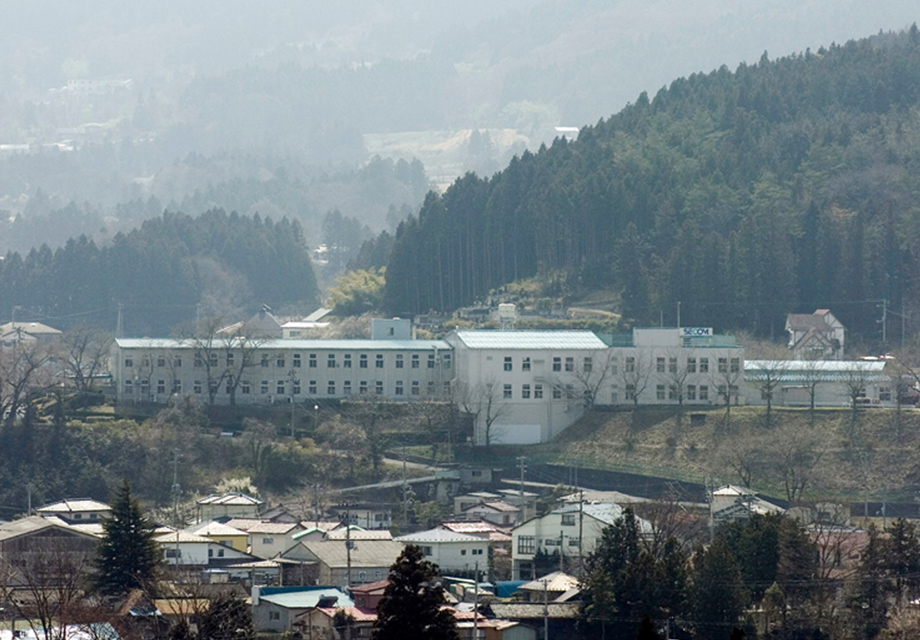
1978
January:Formed a business alliance with Taiwan Secom Co., Ltd. to offer Taiwan's first online security system. The group's first step into the international market.
May:Was promoted to the first section of the Tokyo Stock Exchange.
November:Completed construction of the SECOM SD Center, located in Hachimanyama, Setagaya-ku, Tokyo. It was a secure building built based on globally recognized standards as well as housing facilities including the Tokyo Central Control Center, which centrally monitored the online security system for the Tokyo area.
1979
January:Launched TOTAX (I, II, EC) series as total security management systems for large facilities.
March:Established the Secom Science and Technology Foundation, with the aim of widely promoting research and development of security-related technologies.
July:Established the SECOM ED Center (currently the SECOM R&D Center), in Musashino, Tokyo, as a center for the technical division, and laid the foundation of in-house development.
1980
August:Launched HANKS System, an operation and security system designed for the financial institution ATMs.
Providing security and peace of mind for private residences as well as businesses. Utilizing our extensive network to become an IT leader.
In 1981, we inaugurated Japan's home security market, developing My Alarm (currently SECOM Home Security), the country's first home security system.Our tireless efforts to ensure the best possible service helped grow the company, while constant pursuit of newer and better methods based on our experience ensured heightened security and peace of mind.Now, several decades after launching My Alarm, we are still striving for perfection. With an overwhelming share of the home market, our services are so well established that many in Japan use the SECOM name to refer to a home security system.
During the 1980's - when the ‘new media’ would emerge as the precursor to the information technology society - interest in connecting home computers to telecom infrastructure for transacting business was blossoming. However, while home banking and home shopping were being test marketed, few services utilizing computer networks were actually introduced to the market. In this context, SECOM Home Security garnered attention as a successful model of new media, since the system allowed home customers to receive security services by connecting controllers in their homes to SECOM Control Centers via existing telecom infrastructure.
In 1985, Nippon Telegraph and Telephone Public Corporation was privatized as Nippon Telegraph and Telephone Corporation (NTT), while Daini Denden Co., Ltd. (currently KDDI) was established. With IT rapidly becoming more pervasive, SECOM consolidated its pioneering efforts in the field of information and telecommunications, culminating in 1989 with its vision of the Social System Industry - a framework of innovative social systems with new services that make life more secure, convenient and comfortable.
1981
January:Launched Japan's first home security system, My Alarm (currently SECOM Home Security).

March:Launched Korea Safety System Inc. (founded in July of 1980; currently S1 Corporation) as a joint venture with the Samsung Group. In April of 1981, the company became the first to offer online security systems in Korea.

June:Commenced sales of TOTAX-T, a total security management system for large facilities.
September:Established SECOM TE Center in Mitaka, Tokyo. Consolidated and strengthened the various technical sections of the company.
1982
January:Declared the first year of the “Safe Community Industry.” Marking the 20th anniversary of the company's founding, announced SECOM's aim to offer new services beyond security that would increase security and peace of mind.
June:Completed construction of a new training facility, SECOM HD Center Gotenba, Oyamacho, Sunto-gun, Shizuoka Prefecture.
November:Launched Japan's first medical emergency monitoring system, My Doctor, as an option for My Alarm (currently SECOM Home Security).
1983
August:Became a pioneer in the information industry by establishing community cable television provider Miyagi Network in Sendai, Miyagi Prefecture.Subsequently established Ibaraki Network in Mito, Ibaraki Prefecture in September, and Niigata Network in Niigata in October (These cable television companies were later sold).
December 1:Changed company name from Nihon Keibi Hosho Co., Ltd. to SECOM Co., Ltd.
1984
May:SECOM Founder Makoto Iida participated in the establishment of Daini Denden Kikaku Co., Ltd. (currently KDDI Corporation) as one of the founders, along with Kyocera Corporation founder Kazuo Inamori and Ushio Inc. Chairman Jiro Ushio.
December:Launched Japan's first cash compensation service for financial institution ATMs.
1985
October:Established Nippon Computer Security Corporation (later merged with Secom Trust Systems Co., Ltd.) as a joint venture with telecommunications giant NTT.
1986
January:Completed construction of SECOM TE Center in Mitaka, Tokyo to develop revolutionary security systems and sensors based on the company's unique and stringent quality standards.

December:Launched emergency notification system for the elderly, targeting municipal governments.
1987
August:Launched SECOM MS-1, a security system for condominiums.
September:Established Thaisecom Pitakkij Co., Ltd. (currently Thai Secom Security CO., LTD.) as a joint venture with Thailand's Saha Pathana Group.
1988
January:Launched SECOM MS-2, a security system for condominiums, which provides security for individual units.
April:Launched Japan's first fingerprint recognition system, SESAMO-ID.
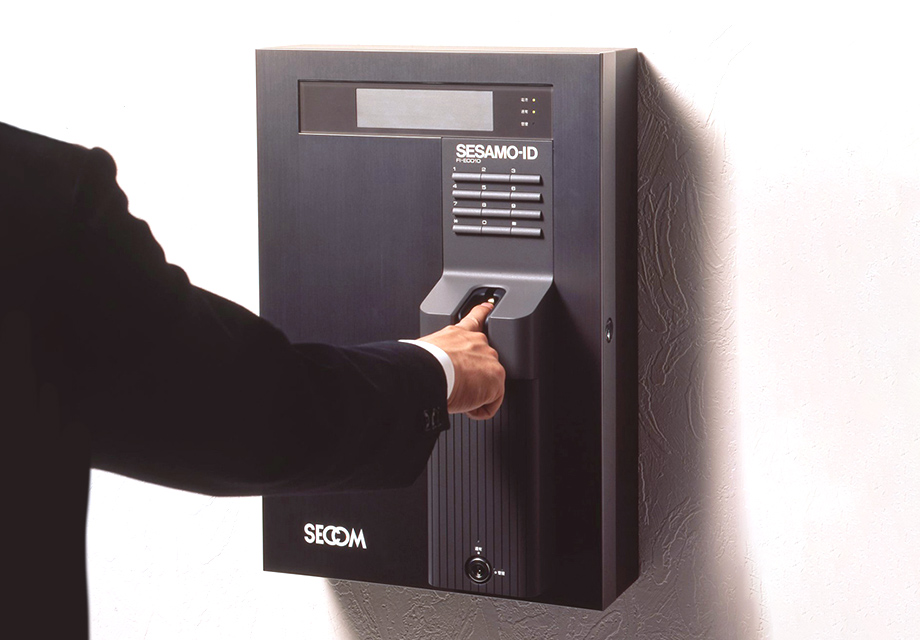
June:Completed construction of SECOM FS Center in Yokohama as a base for distribution.
December:Opened Japan's first home security shop in Jiyugaoka, Tokyo. From this year onwards, SECOM's Control Centers were found in all 47 prefectures of Japan, with one center in each prefecture.

Establishing the Social System Industry with “ALL SECOM.”
Expanding SECOM Group overseas to become Global SECOM.
With a vision of creating the Social System Industry, SECOM ventured into information services and telecommunications in 1983. In 1991, SECOM began its foray into the medical arena with the launch of home medical services, and entered the insurance business in 1998. Geographic information services came next in 1999, followed by real estate services in 2000 and fire protection services in 2006. Our continuous efforts to develop new business fields formed the basis of the Social System Industry.
In 2010, we launched “ALL SECOM,” an initiative that aimed to synergize our seven business groups: security services, fire protection services, medical services, insurance services, geospatial information services, information and communication related services, and real estate and other services.By fostering close collaboration between group companies, we can offer unprecedented levels of security and peace of mind on a global scale. Speedy development coupled with a worldview is key to the success of “ALL SECOM” and, ultimately, advancing the Social System Industry.
SECOM Group has markedly ramped up international operations since establishing our first overseas security services in Taiwan in 1978.Our security business is currently operating in 12 countries and territories outside Japan: Taiwan, Korea, China, Thailand, Malaysia, Singapore, Indonesia, Vietnam, Turkey, the United Kingdom, Australia and New Zealand.Companies in the SECOM Group are now found in 16 countries and territories outside Japan.
SECOM will continue expanding overseas as exemplified by our medical business, which began operating a hospital in India. As our international presence grows, SECOM aims to increase security and peace of mind for people around the world.
1989
January:Announced the first year of the Social System Industry, a vision to create innovative social systems that make life more secure, convenient, and comfortable by utilizing a stable communications infrastructure as a base.
August:SECOM and Secom Industries Co., Ltd. established Secom High Plant Co., Ltd. (currently merged with Secom Industries Co., Ltd.) in Shiroishi, Miyagi Prefecture. The plant cultivated fresh herbs in a completely enclosed plant factory.
1990
May:Former professional baseball player Shigeo Nagashima appeared in television ads and other advertising as the face of SECOM.
May:Completed construction of the SECOM HD Center Nabari in Nabari, Mie Prefecture, followed by completion of the SECOM HD Center Aso in Aso, Kumamoto Prefecture in July, improving the training system on the whole.
1991
April:Acquired Carroll Security Group PLC, a security company based in the UK.
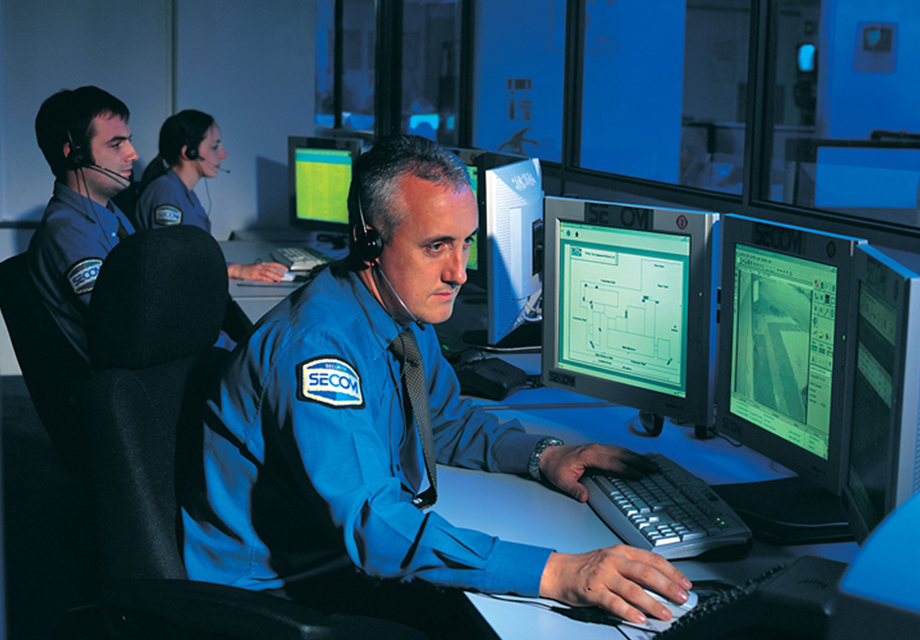
June:Established SECOM Pharmacy, a pharmacy with a clean room for dispensing medicine, and launched a medicine delivery service. Launched Japan's first full-scale home medical service, providing home-visit nursing.

1992
August:Jointly operated Social Welfare Corporation Kouwakai Kugayama Hospital, in Setagaya, Tokyo.
December:Became the first Japanese company to acquire official sanction for a holding company in Beijing, China.
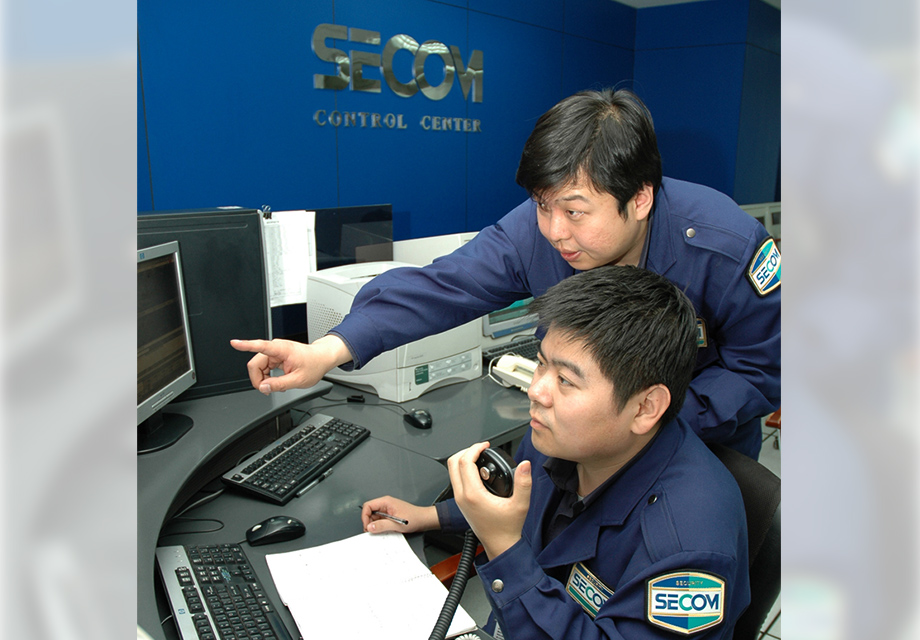
1994
April:Launched Japan's first remote diagnostic imaging support service, Hospi-net.

1995
June:Acquired Ambassador Security Group PLC, a UK security firm.
1996
January:In the UK, the Secom Carroll PLC and Ambassador Security Group PLC merged to create Secom PLC, which was rapidly recognized as the UK's leading security provider.
July:Established Prime Stage Co., Ltd. as a joint investment with Mori Building Co., Ltd. Opened Sacravia Seijo, a residence for seniors in Seijo, Tokyo.
1998
July:Developed SECOM AX, Japan's first remote imaging online security system utilizing image sensors.

September:Acquired capital in mid-sized general insurance firm, Toyo Fire and Marine Insurance Co., Ltd. (currently Secom General Insurance Co., Ltd.), and launched SECOM's insurance business.
1999
July:Launched SECOM IX, Japan's first interactive remote imaging security system.

August:Acquired capital in Pasco Corp., a leading aerial survey company, and moved into the geographical information service business.
2000
June:Established Secom Home Life Co., Ltd. through a merger, and moved into the real estate business.
December:Secom Trust.net Co., Ltd. (currently Secom Trust Systems Co., Ltd.) established a secure data center.
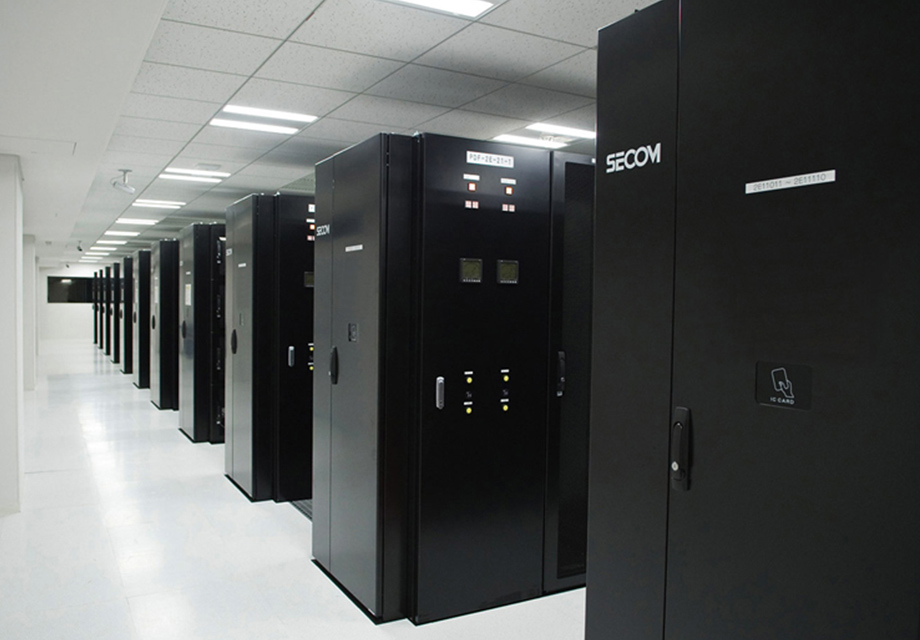
2001
April:Launched Japan's first full-scale system for providing location information, COCO-SECOM. Security services were expanded from businesses to homes, making them available to individuals for the first time.
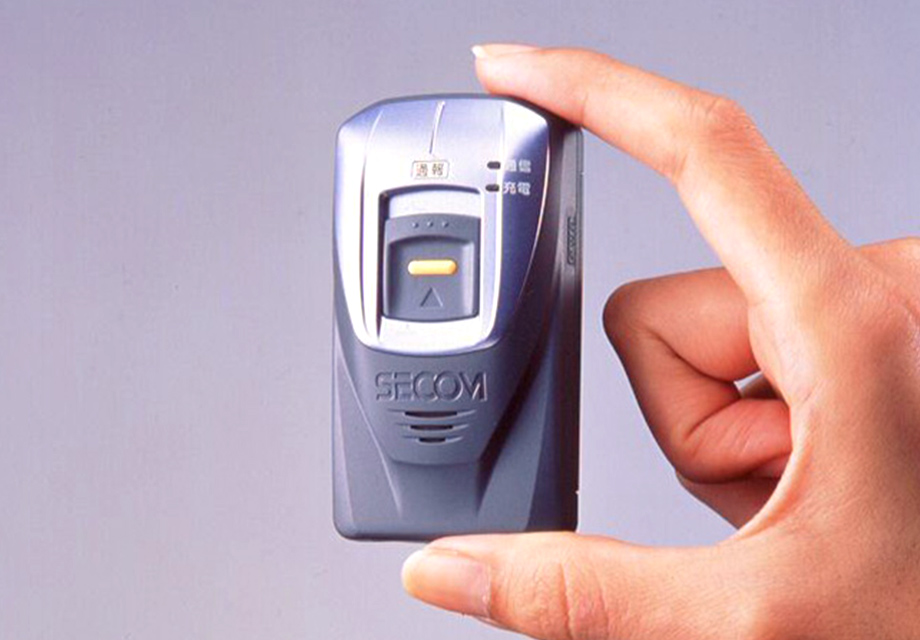
October:SECOM General Insurance Co., Ltd. launched Japan's first unrestricted cancer treatment policy, MEDCOM.
2002
April:Launched "My Spoon," Japan's first robot that assisted disabled persons with eating.
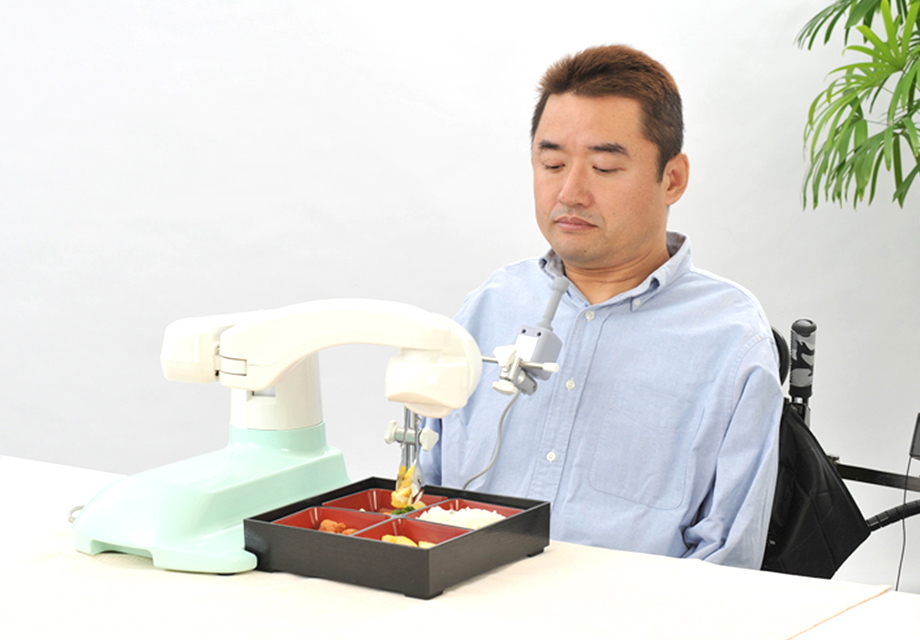
2003
June:Launched SECOM Anshin Glass, Japan's first crime-prevention glass with integrated sensors.
2004
September:Launched SECOM AED Package Service, which provided rental automated external defibrillators (AED), including regular provision of batteries and other consumables.
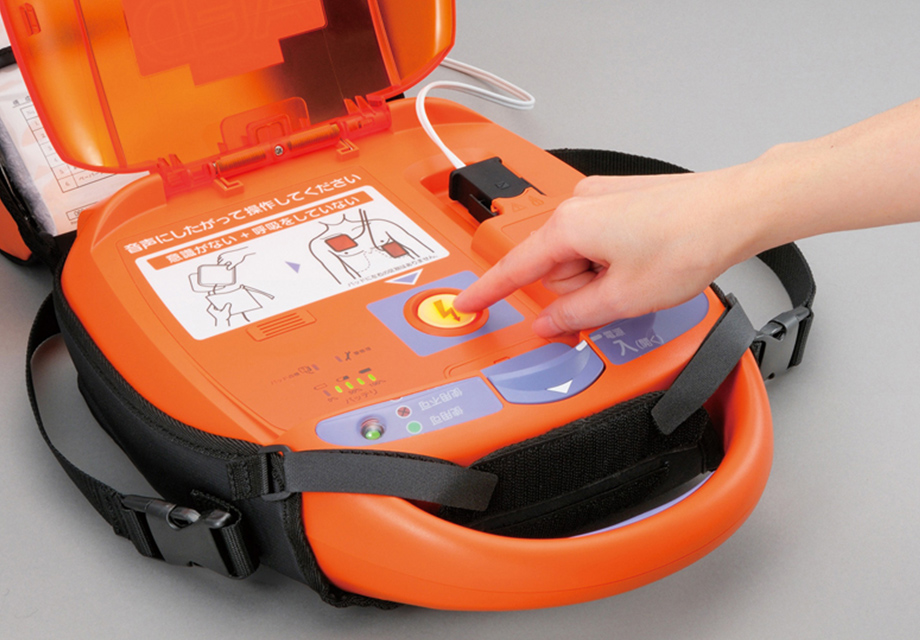
October:SECOM Information System Co., Ltd. (currently SECOM Trust Systems Co., Ltd.) launched SECOM Safety Confirmation Service.
2005
September:Launched lifestyle support service, SECOM Home Service.
October:Launched SECOM Robot X, Japan's first outdoor surveillance robot.
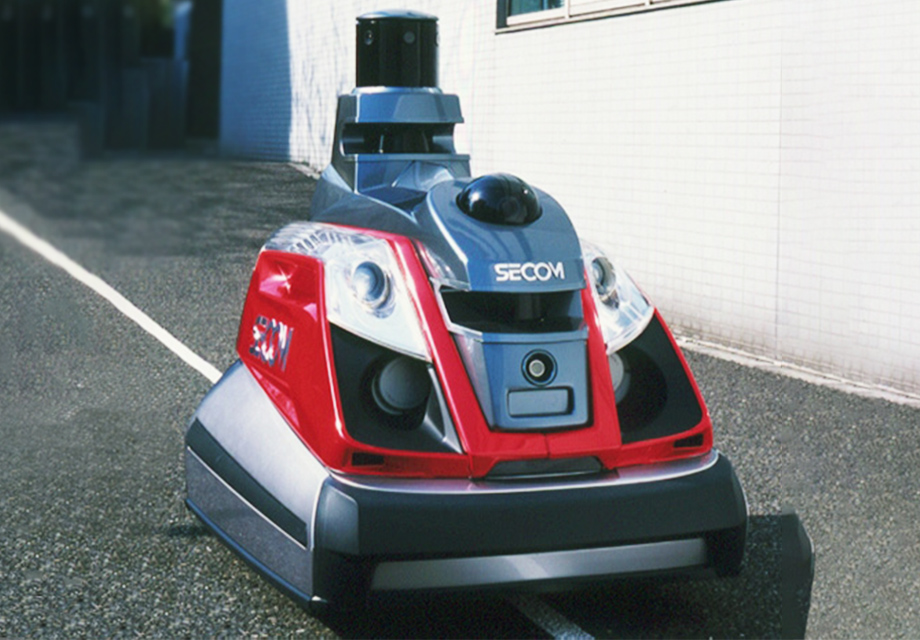
2006
December:Nohmi Bosai Ltd., a leading provider of fire protection services, became part of the SECOM Group.
2007
April:Construction was completed and operations commenced at Mine Rehabilitation Program Center, a private finance initiative (PFI) correctional facility, in Mine, Yamaguchi Prefecture that was created with SECOM as the representative company.
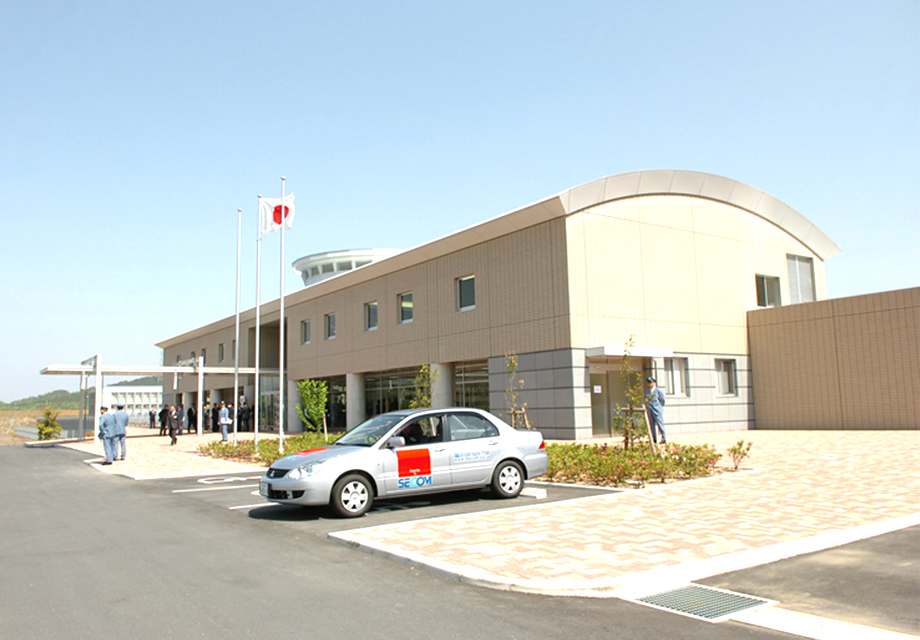
October:Opened Kitsuregawa Rehabilitation Program Center, a newly established PFI correctional facility in Sakura, Tochigi Prefecture, and assumed operation of existing Kurobane Prison in Otawara, Tochigi Prefecture.
2010
September:Launched Japan's first automatic robbery detection system, Intelligent Emergency Alert System.

2011
September:Launched Total Support Service of Emergency Management, which provided comprehensive support for business-continuity planning based on the culmination of SECOM Group expertise.
December:Launched SECOM Home Security G-Custom, Japan's first secure data storage service that enabled subscribers to safeguard important data such as family photographs and bankbooks.

2012
April:Acquired 100% of LIXIL NITTAN Co., Ltd. from JS Group Corporation (currently LIXIL Group Corporation). Currently known as Nittan Co., Ltd., the acquired company plays a part in SECOM Group's fire protection services.
October: At Tokyo Corporation, Japan's leading data center services firm in terms of facility floor space, joined the Secom Group.
2013
June:Secom Trust Systems Co., Ltd. signed a joint agreement with Tokyo's Metropolitan Police Department to promote collaborative efforts to prevent cyber attacks and cyber crime.
September:Began offering the Real-Time Disaster Information Service, a next-generation disaster mitigation service that capitalizes on its proprietary capabilities in Big Data analysis.
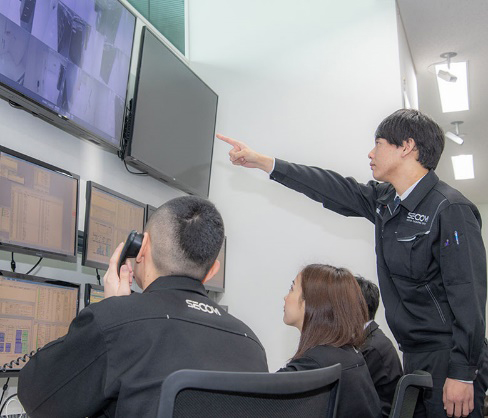
December:Myanmar Secom Co., Ltd. was established in Yangon, Myanmar. (Secom has since sold the subsidiary to a local company and withdrawn from all business activities in Myanmar)
2014
March:Operations commenced at Sakra World Hospital, the first hospital operated by a Japanese company in India.

June:Began offering the SECOM Overseas Transfer Support Package, which supports preparations for overseas assignments.
July:The number of households subscribed to SECOM Home Security exceeded 1 million.
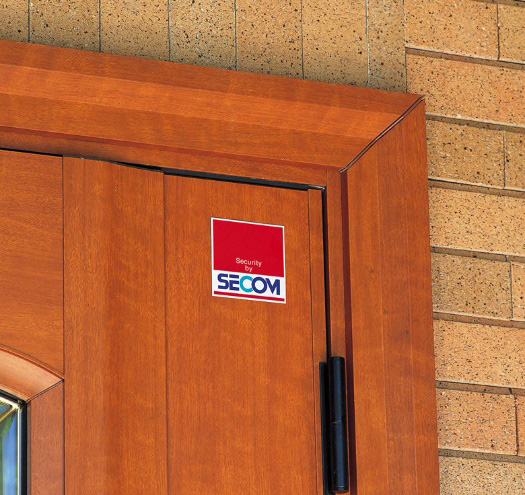
2015
April:SECOM Lifestyle Partner Kugayama, a one-stop consultation service for the elderly, was opened in Kugayama, Suginami Ward, Tokyo.
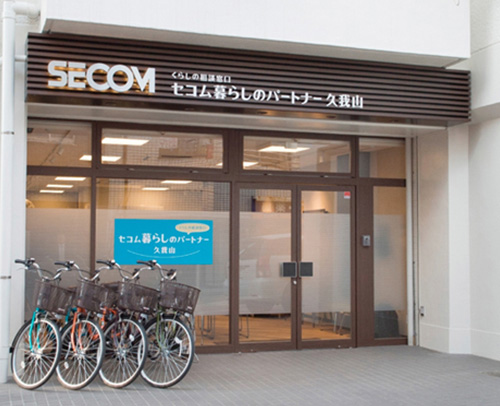
May:Began offering the SECOM Anshin My Number Service, which provides total support for compliance with the national My Number system.
August:Kumalift Co., Ltd., Japan's top manufacturer of small freight elevators in terms of market shares, joined the Secom Group.
October:SECOM was named as an Official Partner (Security Services & Planning) of the Tokyo 2020 Olympic and Paralympic Games.
December:Asahi Security Co., Ltd., Japan's leading provider of cash collection and delivery services, joined the Secom Group.
December:Launched SECOM Drone, the world's first autonomous small flying surveillance robot for the private sector.

2016
February:Introduced the SECOM Airship, the world's first dirigible designed for surveillance for the private sector.

April:Launched SECOM Premium Net Plus, Japan's first dedicated terminal for the prevention and containment of potential vectors for My Number information leakage.
July:Launched SECOM Premium Net Remote Browser, which protects information assets from targeted cyber-attacks.
September:Began offering the SECOM 3D Security Planning based on high-precision 3D images for security planning, which is Japan's first-ever.
Formulating “SECOM Group's Vision for 2030.”
Aiming to deliver seamless peace of mind to anyone, anywhere at any time.
In 2017, we formulated the "SECOM Group's Vision for 2030" to clarify the direction of the SECOM Group for the next 13 years, as we strive to build the Social System Industry. Based on the connections with society that SECOM has cultivated over the years, we will strategically work together with partners who share SECOM's aspirations (“Collaboration” Strategy) to create the conceptual framework of the Anshin Platform, which provides services that deliver seamless peace of mind to anyone, anywhere at any time.
In 2017, we launched SECOM Home Security NEO, a scalable home security system that can be connected to IoT devices, and in 2018, we expanded our home security services by launching SECOM Senior Care Phone Service, an emergency monitoring service. In 2020, as the first step in our "Collaboration" initiative with our partners, we launched Mago Channel with SECOM, a new monitoring service for the elderly.
The SECOM Group is also expanding its overseas operations. Since entering Taiwan in 1978, we have expanded our security business to countries and regions including South Korea, Thailand, Malaysia, Singapore, China, Indonesia, Vietnam, Turkey, the United Kingdom, Ireland, Australia, and New Zealand. In addition, group companies such as Nohmi Bosai, Nittan, Pasco, Secom Medical Systems, and TMJ have expanded overseas, bringing the total number of countries and regions in which the group operates to 18, including Japan.
We will continue to develop services that support a "safe, secure, comfortable and convenient" society while staying attuned to social changes and needs, and providing an enduring peace of mind.
2017
March:Scan Alarms Ltd., a security company headquartered in Northern Ireland, UK, joined the SECOM Group.
May:Formulated “SECOM Group's Vision for 2030”.
July:Launched SECOM Home Security NEO, a flexible system suited to modern lifestyles that can be linked with devices on the IoT etc.
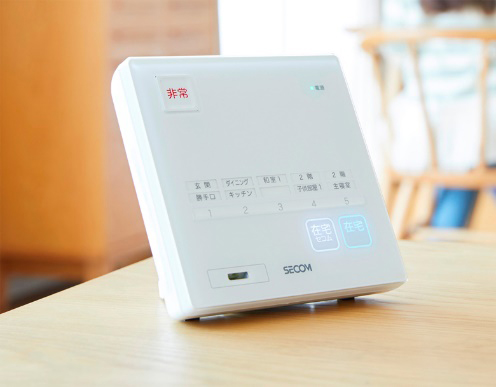
July:Launched SECOM My Doctor Watch, Japan's first emergency medical alert and health management service centered on a wearable wristband tracker.

December:Launched SECOM Anshin Home Delivery Box, which allows customers to safely receive packages whether they are away or at home.
2018
April:Participated in the establishment of a joint security venture as an official partner (Security Services & Planning) of the Tokyo 2020 Olympic and Paralympic Games and became co-chairman.
May:Formulated the SECOM Group Road Map 2022, using the year 2022 as a milestone to accelerate growth toward our 2030 Vision.
August:Toshiba Security Corporation, a subsidiary of Toshiba Corporation, joined the SECOM Group and established Secom Tosec Co., Ltd.
December:Launched SECOM My AED, Japan's first on-line home-use AED package service.

2019
February:Established a joint venture, Secom Aktif Guvenlik Yatirim A.S., with the Çalık Group of Turkey, as SECOM's 13th overseas expansion in the security business.
April:Launched SECOM Senior Care Phone Service, an emergency monitoring service that responds to the concerns of elderly people who live apart from families.

June:Launched SECOM Robot X2, an autonomous patrol robot that inspects suspicious objects.
September:Launched System Security AZ, an all-in-one system that accommodates a variety of functions that help customers' business operations including sophisticated security and work efficiency solutions.
November:Provided event security for the Rugby World Cup 2019 in Japan.
December:SECOM and its partners formulated SECOM DESIGN FACTORY, a brand for joint projects based on the "Collaboration" strategy.

2020
January:Began offering Mago (grandchild) Channel with SECOM, a new monitoring service for seniors, based on the concept of joyful care.

February:Began offering a service linking SECOM Home Security with the SONY Corporation's aibo robot.
August:Launched SECOM Anshin Telework via USB Remote Device, a service that responds to the need for work-style reforms.

September:ADT Services (M) Sdn. Bhd. (currently Secom Smart Malaysia) joined the SECOM Group.
October:ADT Integrated Security Solutions Pte. Ltd. (currently Secom Smart Singapore) joined the SECOM Group.
2021
January:Marked the 40th anniversary of the launch of SECOM Home Security. (Launched January 5, 1981).
February:ADT Alarm Monitoring Hong Kong Ltd. (currently Secom Security Hong Kong Ltd.) joined the SECOM Group.
March:Launched the new COCO-SECOM with added functions by linking it to a smartphone app.
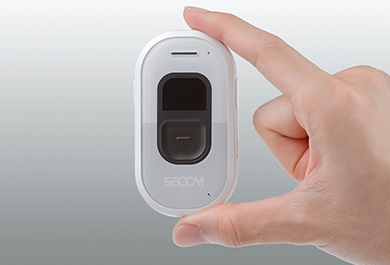
May:Began offering the SECOM Monitoring Service for Seniors as an optional SECOM Home Security service, which utilizes a smartphone app and information stored and analyzed in the cloud.

July ~ September:Provided venue security for the Tokyo 2020 Olympic and Paralympic Games as an official partner (Security Services & Planning).
October:Launched AED 360P, Japan's first “auto-shock AED” that does not require manual operation of the shock button.
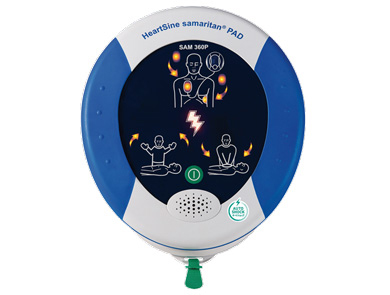
2022
January:Launched Virtual Keibi System, the world's first system which features an AI-powered life-sized virtual character that performs security and receptionist duties.
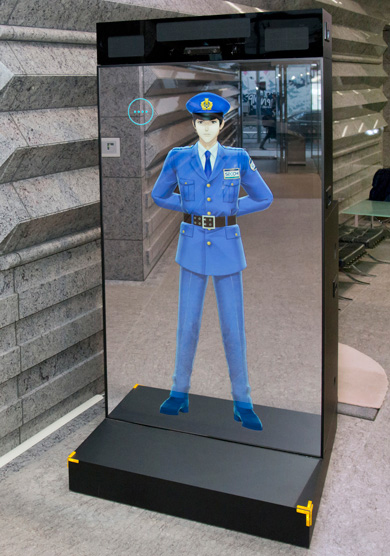
January:Launched “cocobo,” a security robot that makes use of AI and 5G technologies.
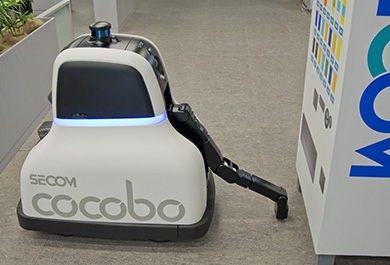
February:Launched SECOM Cantabile application, which allows users to more comfortably operate SECOM Home Security via the Apple Watch or iPhone.

July:Senon Ltd., an industry leader in airport security services, joined the Secom Group.
July:Launched System Security AZ-Air for small and medium-sized commercial facilities and offices.
October:Formulated the SECOM AI Ethics Principles.
2023
April:Launched “anone,” a robot-based communication service for the elderly.
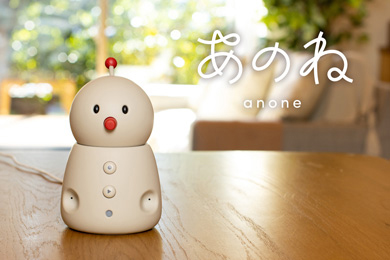
April:Launched YORiSOS, Japan's first application that enables emergency calls to SECOM in conjunction with the Apple Watch's fall detection function.

May:Formulated the SECOM Group Road Map 2027, targeting the year 2027 to realize the 2030 Vision.
May:Launched AZ-Access, an access control system for large-scale facilities.

July:Launched “dot-i,” a web-based service for retail facility management that uses security camera images to improve operational efficiency.

October:Completed development of the SECOM Drone XX (Double X), Japan's first security drone that utilizes AI to offer patrol and intrusion surveillance.
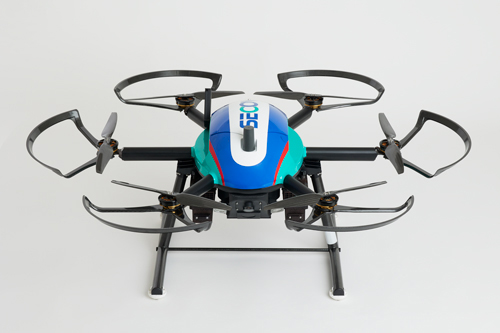
December:Launched SECOM Cloud-Based Access Control, a cloud-based access control service.
2024
February:Launched SECOM Senior Care Phone Service 2 with SECOM's unique convenience features to support the elderly so that they can use it at any time.

April:Launched SECOM VMS, which allows the centralized management of surveillance cameras from multiple manufacturers.
April:Launched HOKAHOKA Emergency Food Set Premium to provide "everyone's usual go-to meals" and "well-balanced nutrition" even in times of disaster.

May:Launched SECOM Anshin Glass SG, Japan's first penetration-resistant security laminated glass using resilient SG film.
June:Launched SECOM AI Behavior Detection System, which uses AI to detect and notify dangerous behavior, reducing the workload and improving the quality of surveillance camera monitoring operations.


